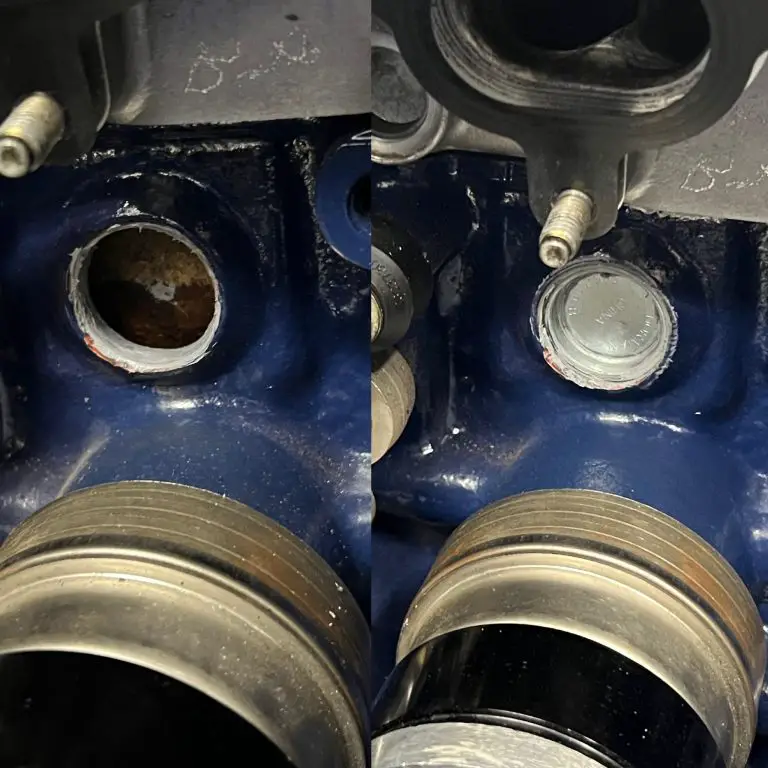Symptoms of a Blown Head Gasket on a Lawn Mower
A head gasket plays a crucial role in the engine of a lawn mower, sealing the cylinders to ensure maximum compression and prevent the leakage of coolant or engine oil. When a head gasket blows, it can lead to significant damage to the engine if left unaddressed. As a lawn mower owner, recognizing the symptoms of a blown head gasket is essential to prevent further damage and costly repairs. In this article, we’ll discuss the common symptoms of a blown head gasket on a lawn mower.
1. Overheating
One of the primary indicators of a blown head gasket on a lawn mower is engine overheating. If the head gasket is compromised, it can lead to the leakage of coolant into the combustion chamber, causing the engine to overheat. Keep an eye on the temperature gauge and be attentive to any signs of overheating during operation.
2. Loss of Power
A blown head gasket can also result in a noticeable loss of power during lawn mower operation. As the head gasket fails to maintain proper compression in the cylinders, the engine may experience reduced power output. If you sense a decrease in performance while mowing, it could be a sign of a blown head gasket.
3. White Exhaust Smoke
Excessive white exhaust smoke coming from the lawn mower’s muffler can indicate a blown head gasket. When coolant seeps into the cylinders due to a damaged head gasket, it is burned along with the fuel, resulting in the production of white smoke. If you observe this symptom, it’s crucial to address the issue promptly to prevent further damage to the engine.
4. Discolored Oil
Check the lawn mower’s oil regularly for any signs of discoloration. A blown head gasket can cause coolant to mix with the oil, leading to a milky or foamy appearance. This contamination can significantly impact the lubrication properties of the oil and result in increased friction within the engine components. If you notice discolored oil, it’s imperative to inspect the head gasket and take the necessary steps to rectify the issue.
5. Bubbles in the Radiator
Upon inspecting the radiator of the lawn mower, the presence of bubbles in the coolant can be indicative of a blown head gasket. The combustion gases escaping into the cooling system due to a compromised head gasket can cause bubbling in the radiator. Keep an eye on the coolant reservoir and radiator for any unusual bubbling activity.
6. External Coolant or Oil Leaks
Visible leaks of coolant or oil around the head gasket area can be a clear indication of a blown head gasket. The failure of the gasket to seal the cylinders effectively can result in the seepage of coolant or oil onto the external surfaces of the engine. Inspect the engine for any signs of leakage and address them promptly.
It’s important to note that the symptoms of a blown head gasket on a lawn mower may vary depending on the severity of the damage and the specific engine design. If you experience any of the aforementioned symptoms or suspect a blown head gasket, it’s advisable to consult a professional mechanic or service center for a thorough assessment and repair.

Credit: www.reddit.com
Frequently Asked Questions On Symptoms Of A Blown Head Gasket On A Lawn Mower
What Are The Common Symptoms Of A Blown Head Gasket On A Lawn Mower?
A blown head gasket on a lawn mower may exhibit symptoms such as white smoke from the exhaust, overheating, or a loss of power.
How Can I Tell If My Lawn Mower Has A Blown Head Gasket?
You can check for a blown head gasket on your lawn mower by inspecting for oil or coolant leaks, performing a compression test, or examining the exhaust for unusual color or odor.
Is It Safe To Continue Using A Lawn Mower With A Blown Head Gasket?
Continuing to use a lawn mower with a blown head gasket can cause further damage to the engine and may lead to costly repairs, so it’s best to address the issue promptly.
What Causes A Head Gasket To Blow On A Lawn Mower?
A head gasket can blow on a lawn mower due to overheating, improper maintenance, or the natural wear and tear of the engine components.
Conclusion
Recognizing the symptoms of a blown head gasket on a lawn mower is crucial for maintaining the longevity and performance of the engine. By staying vigilant for signs of overheating, power loss, white exhaust smoke, discolored oil, radiator bubbles, and external leaks, lawn mower owners can address head gasket issues promptly and prevent further damage. Regular maintenance and timely repairs can ensure that the lawn mower operates efficiently and effectively, providing optimal results during lawn care activities.





